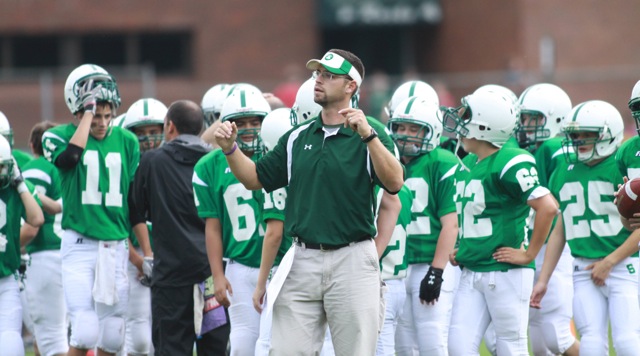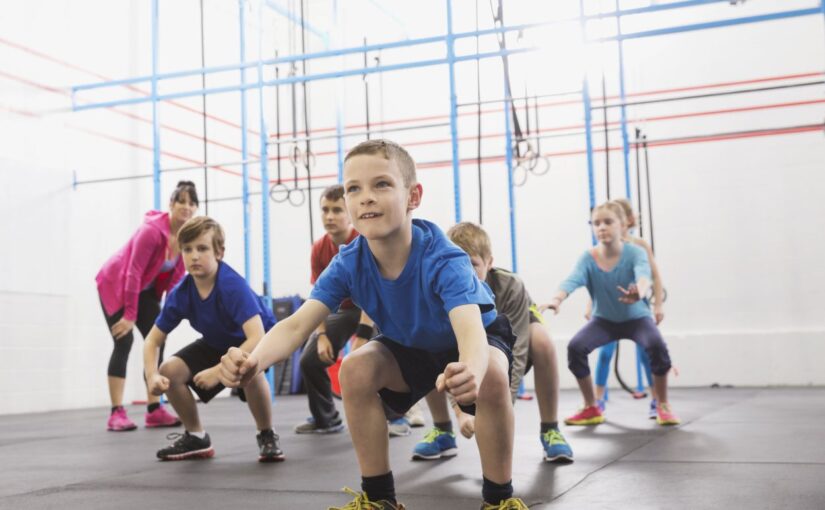A.D.ministration: The importance of supervision
This fall, two high school football hazing and bullying incidents caught the nation’s attention. While the mere occurrence of these unspeakable acts was extremely disturbing, it’s also alarming that many still haven’t gotten the message that hazing and bullying are simply wrong and cannot be tolerated in high school sports.
Some preventative measures were clearly missing in these cases.

The alleged incidents — and they reportedly were not done on one occasion, but several times over a period of weeks — took place in a locker room. And the signal that let athletes know the hazing was about to begin included flicking the lights on and off.
This prompts the question, where were the coaches? If they were supervising the locker room, as they should have been, this signal and the accompanying hazing should have been stopped before it started.
While it should be clear that supervision is critical to prevent hazing and bullying, there are other good reasons coaches must be present. Student-athletes are young and even though they can be good and well behaved, they occasionally partake in horseplay. Someone could be injured, or equipment could be damaged.
Supervision also helps prevent vandalism and theft within your facilities. While you may not have a major problem in your school, it only takes one undetected student to wreak havoc. Therefore, coaches can and do have a role in prevention.
Supervision is a responsibility of every coach just as it is for every teacher in his or her classroom. But unlike teachers, coaches have locker rooms, meeting rooms, gyms, fields, buses, study halls and lobbies to supervise, because all of these relate to their coaching responsibilities.
For supervision to exist remember two key words: vision and voice. If a coach cannot see his or her athletes and they can’t hear the warnings or instructions of the coach, there is no supervision. Therefore, you can easily analyze if supervision actually exists in all aspects of your athletic program.
The following example illustrates another situation that some may not associate with supervision. To break the monotony of warm-ups, some coaches may allow their athletes to run laps around the school. Even if your school is shaped like a rectangle, you would need a minimum of two coaches to maintain visual contact, and most buildings are not constructed this way.
Also since many locker rooms have bays of lockers, coaches need to circulate because they can’t possibly see what may be happening if they stand in one location and talk. Oftentimes, a coach’s mere presence may be enough to deter horseplay, hazing and other bad behavior. But it’s vital that coaches understand their responsibilities and do their best to provide supervision.
To encourage better supervision by coaches in your program, consider the following suggestions.
1. Talk to coaches.
Explain the purpose of supervision to your coaches. As with many responsibilities, it’s usually helpful for someone to understand the why before moving to the how to of any policy or procedures. And don’t forget to include the concept of vision and voice.
2. Describe the expectations.
Clearly spell out the expectations for your coaches covering the time before, during and after practice sessions. These directives have to be in writing and include the provision for the supervision of the athletes who are waiting for their parents to pick them up after practice. Being with athletes who are waiting for a ride may seem like an imposition for many coaches, but they have to be made aware of the great risks that are present. It also has to be continually stressed that they are responsible for the athletes’ safety.
3. Include all venues.
Cover all special situations and venues that may be included in your setting. For example, the provisions of supervision for teams using the weight room have to be clearly detailed. These guidelines have to include having spotters for various types of equipment, training stations and specific instructions where applicable.
Nothing should be taken for granted. Everything has to be clearly explained, posted in the weight room and distributed in written form. The weight room also must be locked when there isn’t a coach present to supervise.
4. Cover bus trips.
Make sure that in your documents and at meetings you cover the role of a coach on the bus during team travel. Inappropriate behavior by athletes can easily occur and the coach is responsible. Since a distracted driver can lead to greater problems such as an accident, supervision on team buses is critical.
A very good technique is to recommend that at least one coach sit at the back of the bus so that he can easily see everyone. This step should be enough to deter most problems.
5. Check in on coaches.
Make unannounced visits to locker rooms before and after practice sessions, and walk through lobbies to see if coaches are meeting their supervision responsibilities. If a staff or individual coach was lax or forgot, an athletic administrator may have to send out an occasional reminder. But these periodic checks are important to see if supervision is provided and to determine if any adjustments have to be made.
6. Meet with struggling coaches.
Conduct one-on-one meetings when necessary with those who are frequently negligent. You may have to include disciplinary measures for those who don’t grasp the gravity of these supervision responsibilities. If guiding and mentoring your staff doesn’t improve their performance, you may have to hire a new coach to replace those who cannot or do not meet the school’s expectations. After all, the athletic administrator is ultimately responsible for the safety of the student-athletes.
For some coaches, supervision is not at the top of their list of tasks. It’s not glamorous or fun. However, a lax approach or careless attitude attached to supervision cannot be accepted. It has to become a normal, integral part of every coach’s daily responsibilities, and assuring that supervision occurs falls entirely on the shoulders of the athletic administrator.
David Hoch, CMAA, has 16 years of experience as a high school athletic director and served for 12 years as the executive director of the Maryland State Coaches Association. In 2000, he was named Athletic Director of the Year by the Maryland State Athletic Directors Association. His column, A.D.ministration, focuses on issues in athletic administration and appears regularly in Coach & Athletic Director magazine.
One thought on “A.D.ministration: The importance of supervision”
Leave a Reply
You must be logged in to post a comment.






The biggest problem today is the disappearance of on campus coaches. The proliferation of walk-on coaches has given rise to the increase in these type of incidents. As I visit schools I often see locker rooms that are totally unsupervised. Doors are opened at the end of the school day and students go in and out until the late afternoon when the last sports wind up practice. The coaches that are there are on the field or courts with their teams. Many walk-on coaches can’t be at practice until starting time and others arrive after it has started. Most of these coaches do not have keys to the facility, a big problem should an emergency occur. School emergency drill procedures will not operate as planned because most of the school staff has left for the day. These problems became amplified when the position of locker room attendant was eliminated as a cost cutting move in many districts. Unfortunately district officials continue to turn a blind eye to this danger.